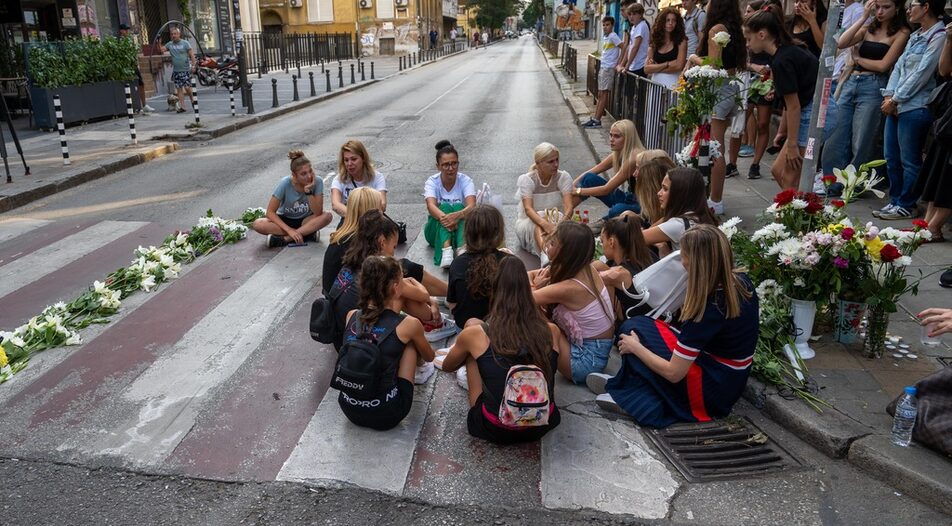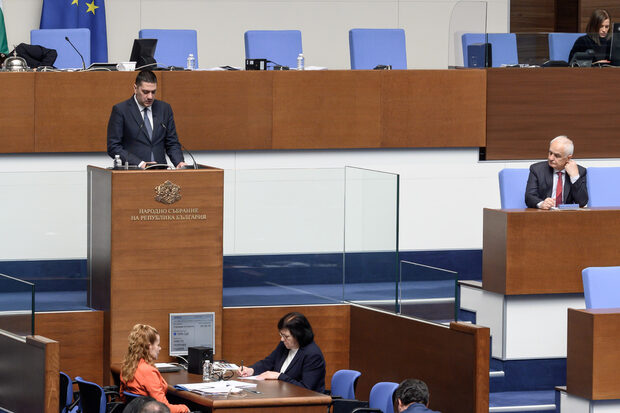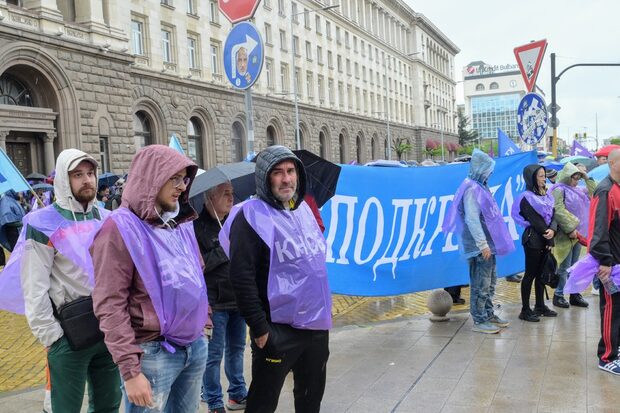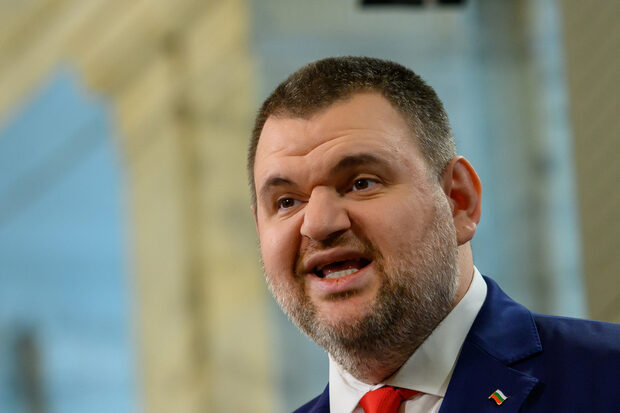This month a 15-year-old boy was killed on a pedestrian crosswalk in central Sofia. Earlier in the year other fatalities included two young people crossing Slivnitsa Boulevard, and two girls walking along Cherni Vrah's crosswalk. In addition, there are more than 300 "invisible" cases of pedestrians being hit in Sofia alone each year.
Data also reveal that Sofia's police now dedicate fewer resources to punishing violations of pedestrians' right-of-way than a decade ago. This is confirmed by data provided to Capital Weekly newspaper from the Sofia Directorate of Internal Affairs (SDVR) for the period 2018 - 2023.
The bigger problem is that the entire country has given up on regulating behavior on the roads. Laws exist, but no one enforces them. Two primary reasons contribute to this: the lack of oversight (particularly in Sofia) and, more importantly, the absence of substantial penalties. Interior Ministry data shows that the state is not actively seeking to collect fines, essentially eliminating a vital deterrent. The bill stands at 437 mln levs (223 million euro) in uncollected money despite fines issued worth 648.8 million levs (331.8 million euro) in the past five years (from 2018 to April 2023). In other words, the state's inaction costs an average of 100 million levs annually.
The forgotten crosswalk
Back to pedestrian safety. After every tragic incident in Sofia, politicians and institutional representatives express their outrage and utter promises. Declarations like "We'll end these accidents" are always heard. However, data tells a different story. In the last decade, 290 pedestrians have died in Sofia alone. Since 2016, penal orders issued by the police for failing to yield to pedestrians have sharply declined. From nearly 4,000 annually in 2013, 2014, and 2015, they have dropped to an average of 200 - 300 per year. While there has been a slight increase after 2018, it still falls far short of the numbers from a decade ago.
In other words, enforcing pedestrians' right-of-way has not been a priority for the metropolitan police for several years. The reverse is also true - the police do not actively monitor jaywalking pedestrians. According to nationwide statistics over the past three years, road traffic incidents classified by the police as "collision with a pedestrian" constitute nearly a quarter of all severe accidents (23% for 2020, 2021, and 2022, and 25% and 26% for 2018 and 2019, respectively).
Meanwhile, the fine for failing to give way to a pedestrian on a crosswalk is 100 leva (50 euro), 200 leva (100 euro) for repeat offenses, and a one-month suspension of driving privileges.
Missing: hundreds of millions in fines
In practice, compliance with traffic rules in Bulgaria is left almost entirely to the discretion of drivers. This situation results from a series of absurd regulatory omissions. Sofia's police have three fixed-speed cameras, and this year received an additional five mobile radar units as a gift from Sofia Municipality. Simultaneously, the municipality owns 600 cameras, but not a single one of them monitors speeding or running through red lights. They are only used for video surveillance and are part of the Municipal Traffic Management Center. It has been proposed that this be changed, allowing the municipality to collect fines. Currently, signals from the center are occasionally sent to the police with coordinates and videos because the two systems "don't talk to each other". The police rarely have the capacity to deal with cases provided by the municipality, and even if fines have been issued, it doesn't guarantee they will be paid. A significant portion end up in court; others are never served because the violator cannot be located, and others have simply exceeded the statute of limitations.
This brings us to the most significant issue in the chain: the imposition and collection of fines. A reference provided to Capital Weekly by the Interior Ministry shows that the police collect just two-thirds of the overall value of fines.
For instance, in 2022, fines to the tune of 188.3 million levs were imposed. Out of this sum, 28.5 million levs represented the value of penal orders, 24.9 million levs were from issued paper tickets, and 134.9 million levs came from electronic fines. Simultaneously, the Interior Ministry accounted for the collection of only 54.2 million levs in 2022. This situation repeats itself in other years, with statistics showing that the state genuinely fails to collect the largest portion of money - electronic fines (topping 100 million levs annually for the past five years). The state has thus missed out on collecting 437 million levs during this period.
This issue likely arises from a convoluted process for issuing fines - it's a matter of "luck" whether a police officer stops you, or if you happen to renew your driver's license or get checked when entering the country by car through a border checkpoint. Electronic checks don't work, and payments must be made in person at the counter. With recent legal changes in August, initiated by Bozhidar Bozhanov (deputy from WCC-DB), electronic payment is now offered as an option. This seems like a step in the right direction, but further improvements are needed. For example, electronic signatures are now required for registration in the system.
The other payment option is through the National Revenue Agency (NRA). However, the NRA can only inform you of the amount you owe and will redirect you to pay it at the Road Traffic Police office.
The NRA clarified in answers to Capital Weekly that the agency collects debts imposed or established by the authorities of the Interior Ministry that have not been paid within the voluntary payment period.
All of these millions that the state had to collect from fines were supposed to be invested in better infrastructure to prevent accidents. That's why a special "Road Safety Fund" was made years ago. However, it turns out that the resource has not been effectively utilized over the years. Interior Ministry responses reveal that only a small portion of the funds available have been allocated for road safety, and even the limited investments were not directed toward infrastructure. For instance, in 2022, the fund received 71 million levs. Out of this, 16.9 million levs were invested, distributed as follows: 8.6 million levs for cameras and software, 4.3 million levs for materials and consumables, drug tests, etc., and 3.9 million levs for post-warranty support of devices and systems. This was even the richest year in terms of investments. In 2019, investments amounted to 6.09 million levs, in 2020 - 5.7 million levs, and in 2021 - 13.5 million levs. The expenditure items remained the same.
This system of responsibility-shifting between institutions, coupled with non-communicative camera systems, ultimately favors corruption. Corruption starts from the driving test and continues through road inspections, technical inspections, and even road construction. Appointments within government and local authorities also play a role in these processes. It is hard to expect people who have entered government or local positions through such channels to actively combat these practices. And as long as this continues, deliberate inaction will keep costing lives.
This month a 15-year-old boy was killed on a pedestrian crosswalk in central Sofia. Earlier in the year other fatalities included two young people crossing Slivnitsa Boulevard, and two girls walking along Cherni Vrah's crosswalk. In addition, there are more than 300 "invisible" cases of pedestrians being hit in Sofia alone each year.
Data also reveal that Sofia's police now dedicate fewer resources to punishing violations of pedestrians' right-of-way than a decade ago. This is confirmed by data provided to Capital Weekly newspaper from the Sofia Directorate of Internal Affairs (SDVR) for the period 2018 - 2023.












